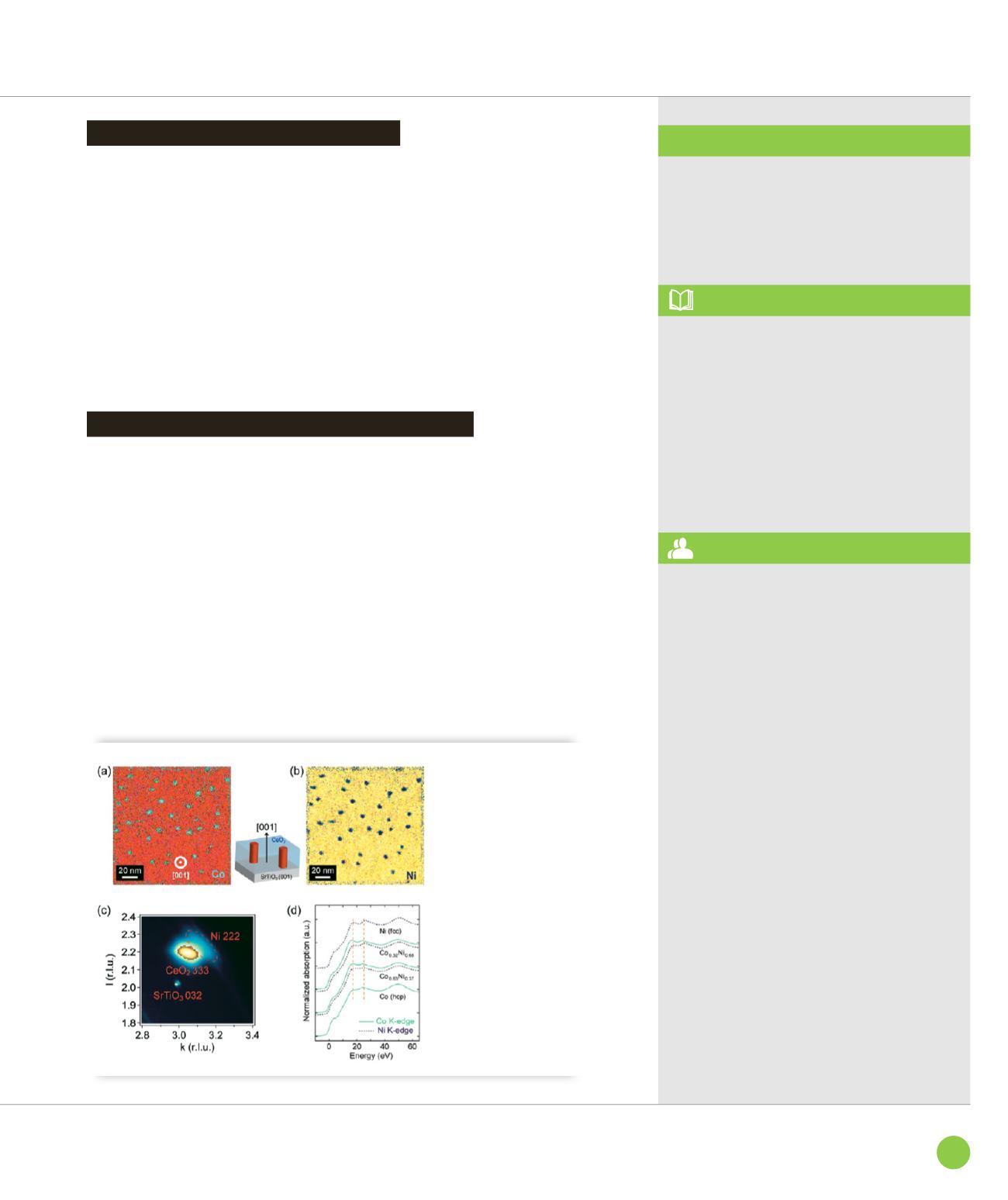
The metallic character of these wires
has been shown by X-ray absorption
measurements at the Ni and Co K-edges,
carried out on the SAMBA beamline.
Chemical mapping of the samples,
by energy-filtered transmission electron
microscopy at the Ni and Co L-edges,
has shown nanowire growth within
the matrix and confirmed the formation
of an alloy: Co and Ni are clearly present
simultaneously in the nanowire. These
results are backed-up by X-ray absorption
measurements at the K-edge: the structure
around the atoms of nickel and cobalt
has been modified at the same time
and depending on the ratio between
the two species.
The resulting system is epitaxial:
Co
x
Ni
1-x
is in cube-on-cube epitaxy
with the matrix, which grows itself
epitaxially on the substrate. This could
be established by high resolution
transmission electron microscopy
and X-ray diffraction measurements
performed on the SIXS beamline.
The ability to control the composition
by the sequence used for growth has
been checked: the Co/Ni ratio in the wire
is indeed as programmed. This allows
the magnetic anisotropy of the nanowires
to be adjusted: an enhancement of the
magnetic anisotropy is observed when
the proportion of cobalt increases, starting
from pure nickel.
In principle, this method can be applied
to other compounds and thus control
a physical property that depends on
the composition of the epitaxial nanowires
or nanopillars. In the case of cobalt-nickel
alloys, it will be possible to optimize
the Co/Ni ratio while maintaining a cubic
crystal structure. This is not possible
in bulk systems for percentages of Co
higher than 65%: the system then transits
to the hcp phase. The situation may be
different for very small diameter nanowires
in vertical epitaxy.
This study was funded by C’nano IdF
and ANR (ANR-2011-BS04-007).
Proofs of alloy nanowires formation
Programming the composition of the alloy…
SAMBA & SIXS beamlines
ASSOCIATED PUBLICATION
Combinatorial growth and anisotropy control
of self-assembled epitaxial ultrathin alloy
nanowires
F.J. Bonilla, A. Novikova, F. Vidal*, Y. Zheng,
E. Fonda, D. Demaille, V. Schuler, A. Coati,
A. Vlad, Y. Garreau, M. Sauvage-Simkin,
Y. Dumont, S. Hidki, and V.H. Etgens
ACS Nano 7 (5) (2013), 4022–4029
* Institut des Nanosciences de Paris, UMR7588
CNRS / Sorbonne Universités UPMC, Campus
Jussieu, Case courrier 840, 4 place Jussieu
75252 Paris Cedex 5, France
CORRESPONDING AUTHOR
➋
(
a-b
) Planar views using
electron microscopy, filtered
at the cobalt and nickel
L-edges. The discs are
the signature of the presence
of alloy wires seen in the
direction of growth [001].
(
c
) Reciprocal space map
of arrays of epitaxial nickel
wires in CeO
2
/SrTiO
3
(001)
(
d
) X-ray absorption spectra
at the nickel and cobalt
K-edges showing the metallic
character of the wire and the
nickel-cobalt alloy formation.
In the wire alloy spectra,
the intensity of the two peaks
represented by the vertical
dashed lines is characteristic
of a face-centered cubic (fcc)
structure
97
SOLEIL
HIGHLIGHTS
2013


